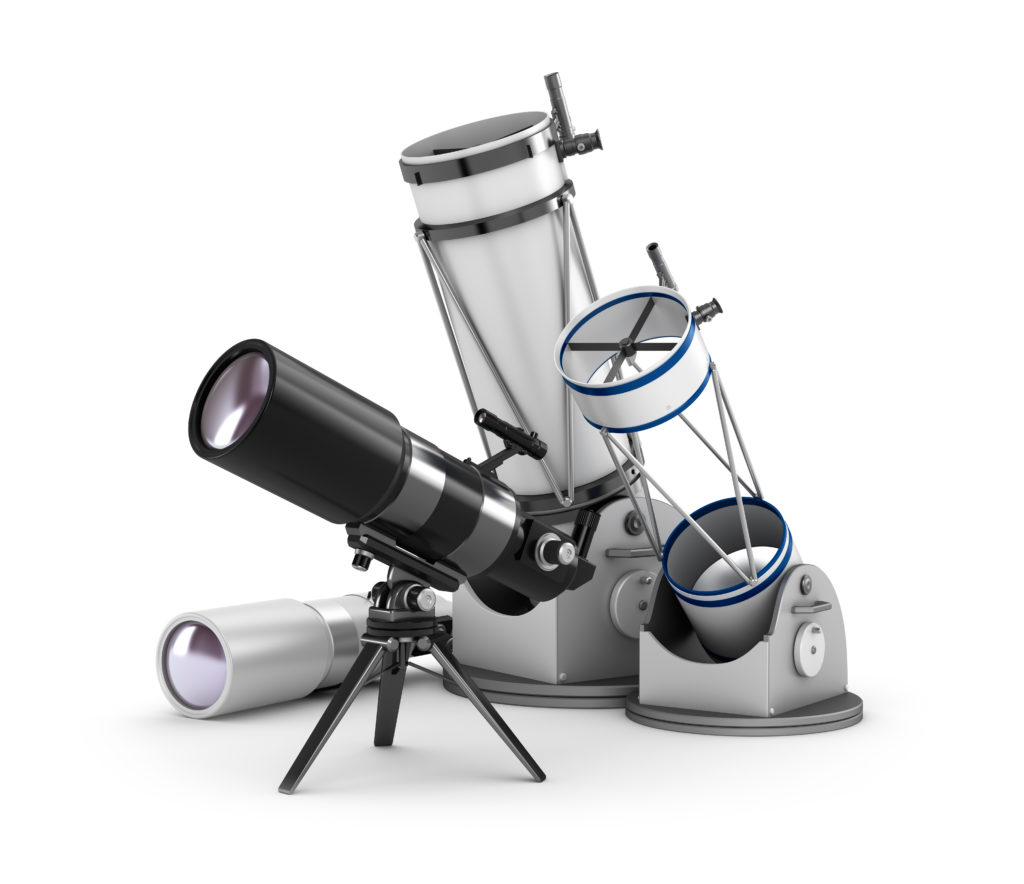The time has come for you to get a telescope. You probably felt you needed more than a pair of binoculars, which helped concentrate your stargazing skills. However, now is the time for a telescope but should you get a reflector or refractor telescope which is better?
It can always be a challenging choice for first-timers. Fortunately, we have a detailed review considering their strength and weakness to help make the right choice for your next star gaze.

Which is better the reflector or refractor telescope?
General Specification of Reflectors
Just as it is named, reflectors make use of concave mirrors to reflect distant parallel light rays image to your retina. Simple, reflectors reflect, exactly like mirrors. As a result they are the go-to for a telescope with big apertures.
Although a small reflector scope is less expensive, you get features you pay for. Bigger reflectors are expensive, gather a massive amount of light, and deliver captivating images of the viewed celestial body. Structurally, the scope has a big curved-shaped mirror at the bottom and a big hollow hole at the other end.
Key Features of Reflector Telescope
Design
A reflector telescope design uses two mirrors for gathering and focusing light, as opposed to two lenses. Issac Newton designed it to correct chromatic aberration; a rainbow observed around some celestial objects by refractor telescope.
Mirrors
These mirrors are parabolic in shape, which helps focus the parallel lights rays from all celestial objects to a single focus. Furthermore, there is a second, flat, and small mirror placed in between the eyepiece and the parabolic mirror to help reflect the image for proper viewing.
Purpose
Reflector telescope is best for deep-sky viewing and planetary viewing.
More importantly, 6-inch and 8-inch Newts poses the right aperture for delivering captivating images. Other lower sizes like 3-inch and 4,5-inch are a decent choice for surveying the celestial luminaries.
Key Issues of Reflector Telescope
These type of telescope come with intriguing benefits, sadly, it is partly marred with some potential problems. Since it makes use of mirrors, some light rays are lost during reflection.
Some reflector telescope may not feature perfectly parabolic mirrors, which results in a slight diversion from the perfect focus point. This consequence of imperfect curve is called dragging effect.
Also, the mirrors require frequent cleaning, after which you may have to realign when done. This still doesn't answer the overall question of reflector or refractor telescope which is better? So let us move on to some pros and cons and then below some information on refractors.
PROS:
Features large mirror for gathering more distant light
Corrects chromatic aberration, a color fringe around stars
Relatively inexpensive
CONS:
Its optical quality may not be up to par
Frequent cleaning of the mirror and alignment
An open tube that makes it vulnerable to humidity, dust and many more.
Heavy and challenging to move around
General Specification of Refractors
Refractor Telescope makes use of lenses; are appears slim and long. They are great for viewing larger and brighter celestial objects such as planets and the moon. Other incredible advantages include its ability to achieve thermal stability almost instantly for low distortion of images, right-side-up images, and the sealed tube makes maintenance less of an issue.
For non-professional astronomers, I advise to start with 3.1 inches (80 nm) reflector and work your way up.
Key Features of Refractor Telescope
Design
Unlike the reflector telescope, a refractor telescopes build uses the lens for gathering and focus light. Needless to say, it is the first telescope to be made. This scope bends the distant parallel light. They can come in the usual telescope look similar to the ones in several pirate movies - a large, sealed end and a small eyepiece at the other end.
Lens
The objective convex lens gathers incoming light from a celestial object like a star. It then bends it into a single focus point. The eyepiece, which is the second lens, acts as a magnifying lens, as it enlarges the focus image for clear and captivating view by your retina.
Purpose
They are great for viewing the starry sky with incredible contrast and sharpness. As a result this optical quality makes its valuable for use in astrophotography and also astronomical observation.
Key Issues of Refractor Telescope
With this type of telescope, you may have to deal with chromatic aberration, where a rainbow is observed around the viewed celestial body. In a nutshell, a star will no longer have a specific color, but a color ring is seen around the star.
General Specification of Reflectors
Just as it is named, reflectors make use of concave mirrors to reflect distant parallel light rays image to your retina. Simple, reflectors reflect, exactly like mirrors. They are the go-to for a telescope with big apertures.
Although a small reflector scope is less expensive, you get features you pay for. Bigger reflectors are expensive, gather a massive amount of light, and deliver captivating images of the viewed celestial body. Structurally, the scope has a big curved-shaped mirror at the bottom and a big hollow hole at the other end.
Now, let us have a look at the pros and cons of having a reflector.
PROS:
Features large mirror for gathering more distant light
Corrects chromatic aberration, a color fringe around stars
Relatively inexpensive
CONS:
Its optical quality may not be up to par
Frequent cleaning of the mirror and alignment
An open tube that makes it vulnerable to humidity, dust and many more.
Heavy and challenging to move around
General Specification of Refractors
Refractor Telescope makes use of lenses; are appears slim and long. They are great for viewing larger and brighter celestial objects such as planets and the moon. Other incredible advantages include its ability to achieve thermal stability almost instantly for low distortion of images, right-side-up images, and the sealed tube makes maintenance less of an issue.
For non-professional astronomers, I advise to start with 3.1 inches (80 nm) reflector and work your way up.
With that being said, let us take a quick review of its pros and cons.
PROS:
Impressive sharpness and contrast
Lightweight and easy to move around
Sealed tube prevent dust and humidity from getting in
You hardly have to clean its lens or struggle with alignment
CONS:
Suffer from chromatic aberration
Smaller diameter meaning less focused light
On the pricey side
Reflector or refractor telescope which one is better? Final thoughts.
Telescopes are excellent and offer more than you get from any binocular for sky gazing or viewing. However, most people get stuck in deciding either reflector or refractor which is best? No doubt, it is not an easy choice, as no telescope meets everyone’s requirement.
Therefore, it is vital that if you are on a budget and don’t a scope that would break a bank, then I strongly advise you purchase reflectors (you can take a look at our best telescope for under 200 dollars for more information). In contrast, if you prioritize top optical quality, then refractors will serve you better. But, on a general note, Reflectors offer you a chance to enjoy viewing your favorite celestial body without chromatic aberration so you might want to save more more. We hope that answers your question of reflector or refractor telescope which one is better. You can look at our reviews of telescopes under 200 dollars for a great start to telescope journey.
Sources:
http://www.astronomytrek.com/which-telescope-is-better-a-reflector-or-refractor/
http://www.astronomytoday.com/astronomy/telescopes.html
https://protelescope.com/telescope-buying-guides/reflectors-vs-refractors
 Past Horizon We aim to enhance your experiences of viewing wonders in and out of our galaxy!
Past Horizon We aim to enhance your experiences of viewing wonders in and out of our galaxy!
